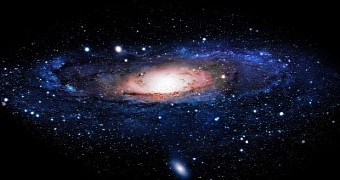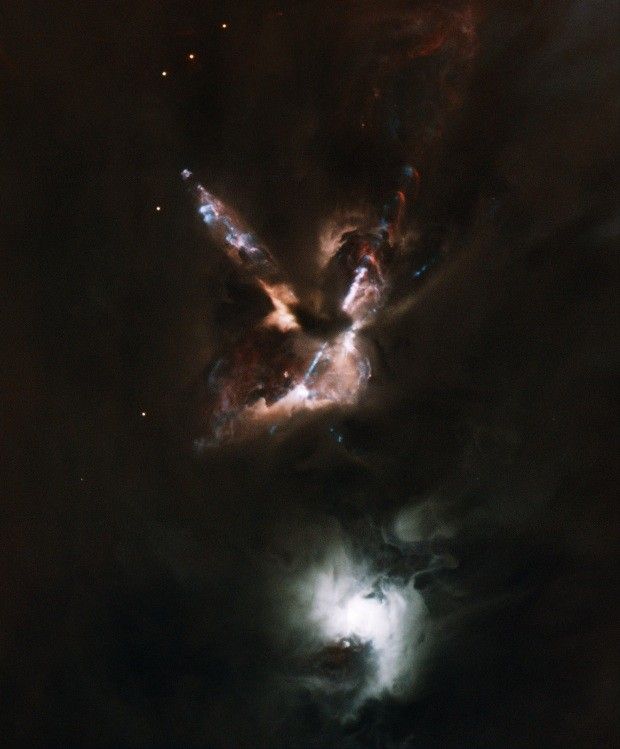Star formation is a pretty straightforward routine: dense clouds of gas and dust collapse under their own gravitational attraction, and so an even denser and incredibly hot core is born. This core, called a protostar, then accumulates more gas and dust. Sooner or later, it grows to become a proper fiery orb.
Whatever dust remains goes on to form planets, comets or asteroids, scientists explain. Of course, this doesn't necessarily have to happen. It can just go on being, well, dust.
What's interesting is that star formation can be quite messy as the gas and the dust don't simply settle into a perfect sphere. Au contraire, there's a lot of commotion going on.
The view below, delivered by the Gemini Observatory, shows cosmic fireworks accompanying the birth of stars in a region of space called the Herbig-Haro 24 Complex.
Discovered in 1963 by astronomers George Herbig and Len Kuhi, the Herbig-Haro 24 Complex is located at a distance of about 1,300 light-years from our Solar System. The region is described by scientists as a stellar nursery, which means it is now busy forming baby stars at a rapid pace.
What about the fireworks?
The apparent fireworks visible in this Gemini Observatory view of the Herbig-Haro 24 Complex are really gas jets springing from the stellar nursery at supersonic speeds. Scientists say the image shows six jets, all originating from a small collection of newborn stars.
“Gemini Observatory has released one of the most detailed images ever obtained of emerging gas jets streaming from a region of newborn stars,” reads the image's description.
Furthermore, “The region contains no less than six jets streaming from a small cluster of young stars embedded in a molecular cloud in the direction of the constellation of Orion.”
This view of gas jets resulting from star formation processes underway in the Herbig-Haro 24 Complex is one of the most detailed yet. Besides, researchers say this is the first time so many gas jets have been observed being pushed out of the same stellar nursery all at once.
Interestingly, several low-mass stars appear to be lurking near the star-forming core. Astronomers think these petite orbs are protostars that were pushed out of the cloud as their siblings started to grow bigger.

 14 DAY TRIAL //
14 DAY TRIAL // 

